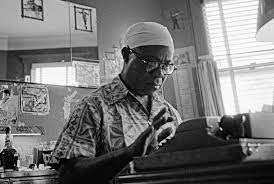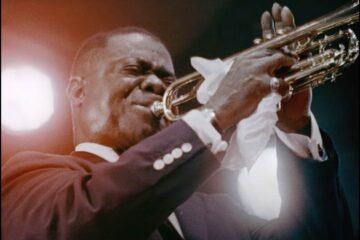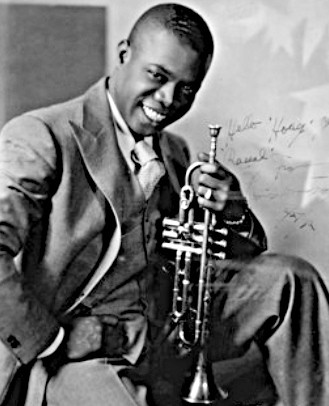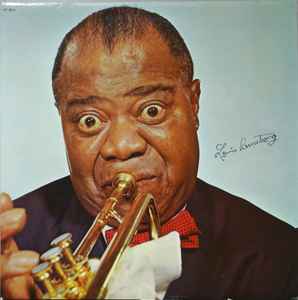If you are old enough to have an instant mental image of Louis Armstrong, I’ll bet you ten bucks that it has never been this:

One of the coolest things about the revelatory doc, Louis Armstrong’s Black & Blues is that it completely disassembles the notion that Armstrong was just a jolly, grinning (described by some African-Americans during the civil rights era as “shuffling” or “Uncle Tom”) entertainer.
Nope. It turns out that he had deep feelings about race in society, but his days of playing in hotels where he wasn’t allowed to stay, entering venues through the “colored entrance” around back, were not so far in his past.
We learn that Armstrong had a reel-to-reel tape recorder and we hear the man saying things that we could have never guessed, based on his public persona; the first time you hear that gravelly, genial voice say “c*cksucker” or “mother*cker”, it is almost shocking, but only in the context of the times and the man we thought we knew. Sadly, it is far less shocking that his white manager called him the N-word.
You will have noticed from the photo above that Armstrong is typing at home. He would lock himself in his office and write letters and essays, it seems mostly in handwriting. Again, it’s a revelation to read his words across a scanning page as they are read by Nas.



The other thing that many people will not have known is just how important and influential he was as a horn player. Wynton Marsalis and other top musicians describe in detail what that means in their universe. The musical side of the story is not given short shrift, and there are nods to his film roles and archival footage from talk show appearances in his later years.
I am actually leaving out several other facets of the man that range from laxatives to cutting out newspaper pictures and articles, which he kept for years.
I realize, just from doing the math, that I was around 5 years old when I started imitating Armstrong singing Hello, Dolly! to the delight of my grandparents. He had almost become a caricature of himself in those last years before his death in 1971.
But that was just the outside. What I love about, Louis Armstrong’s Black & Blues is that we now know what was happening on the inside, thanks to director Sacha Jenkins.
3 ½ out of 4 stars | Currently streaming on Apple TV+

